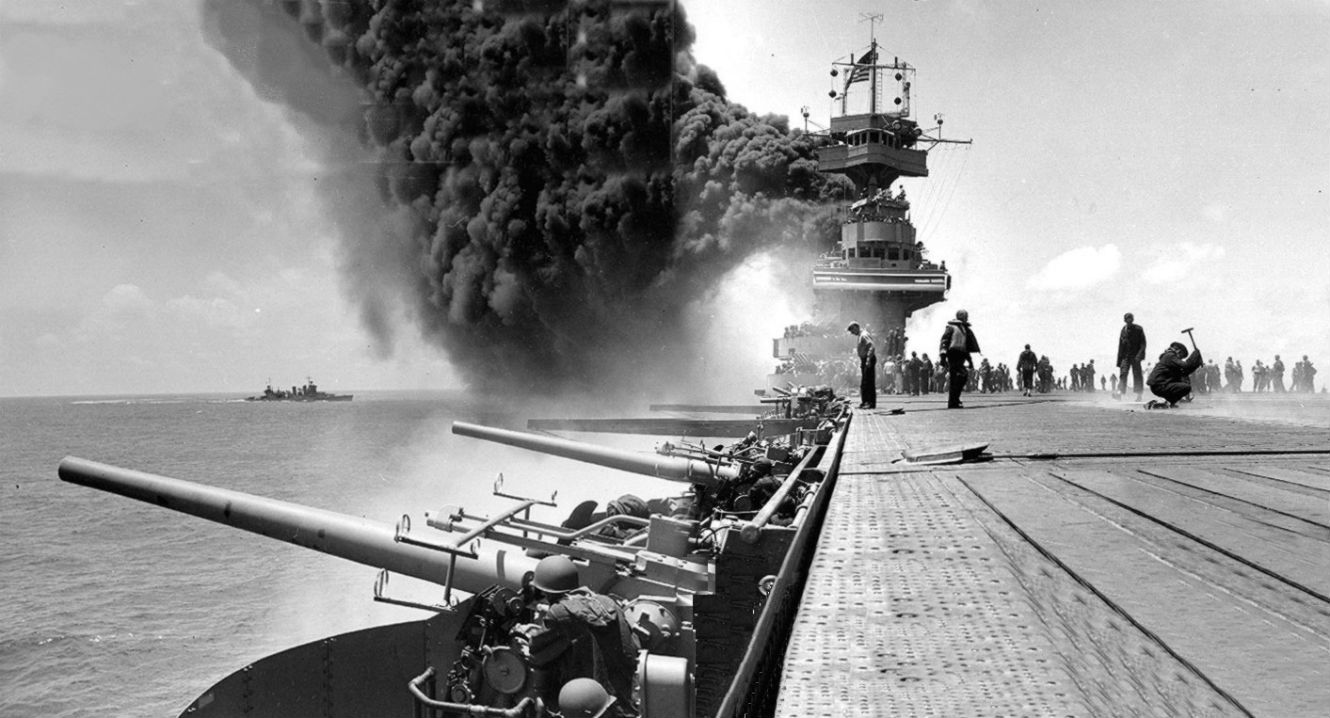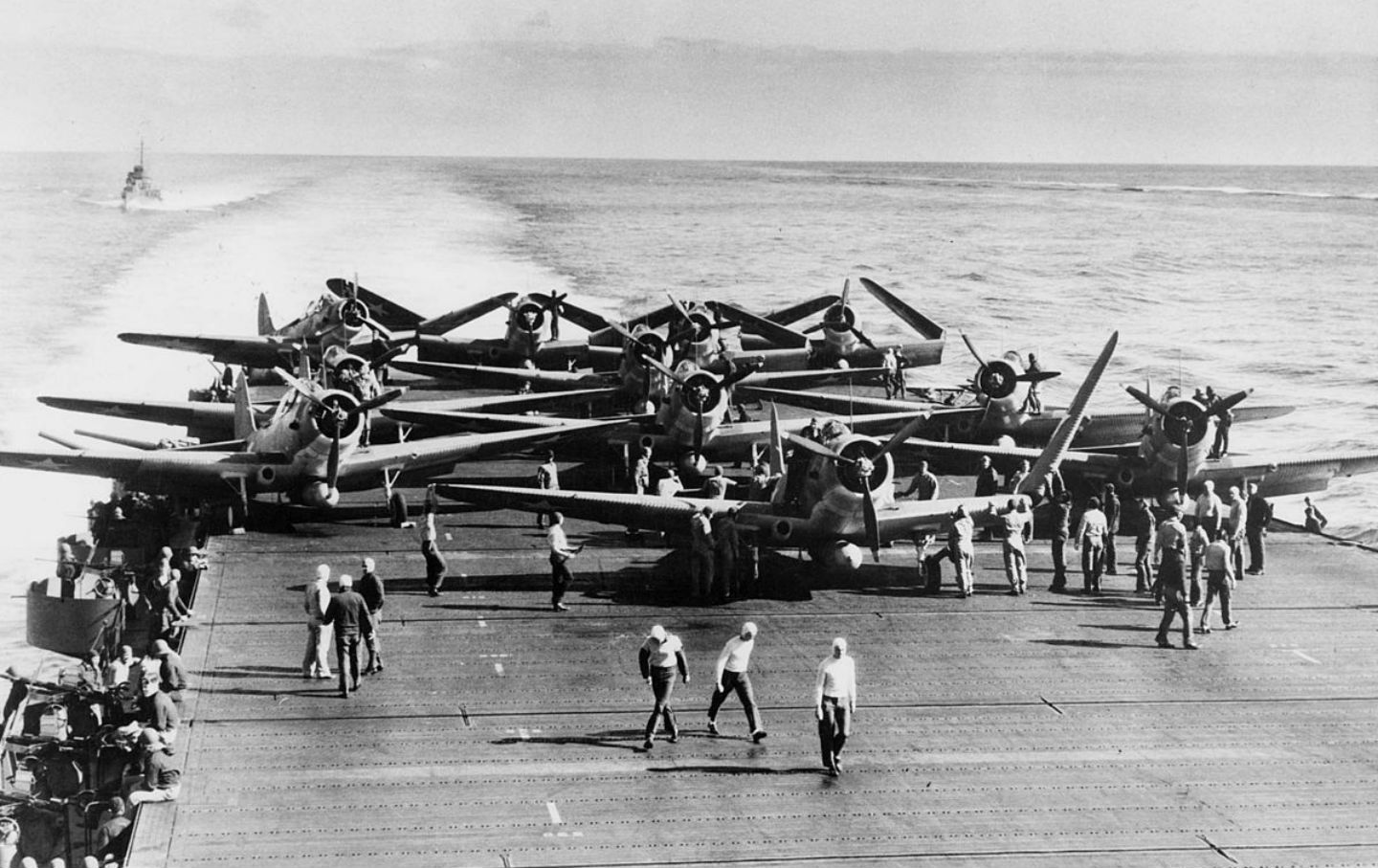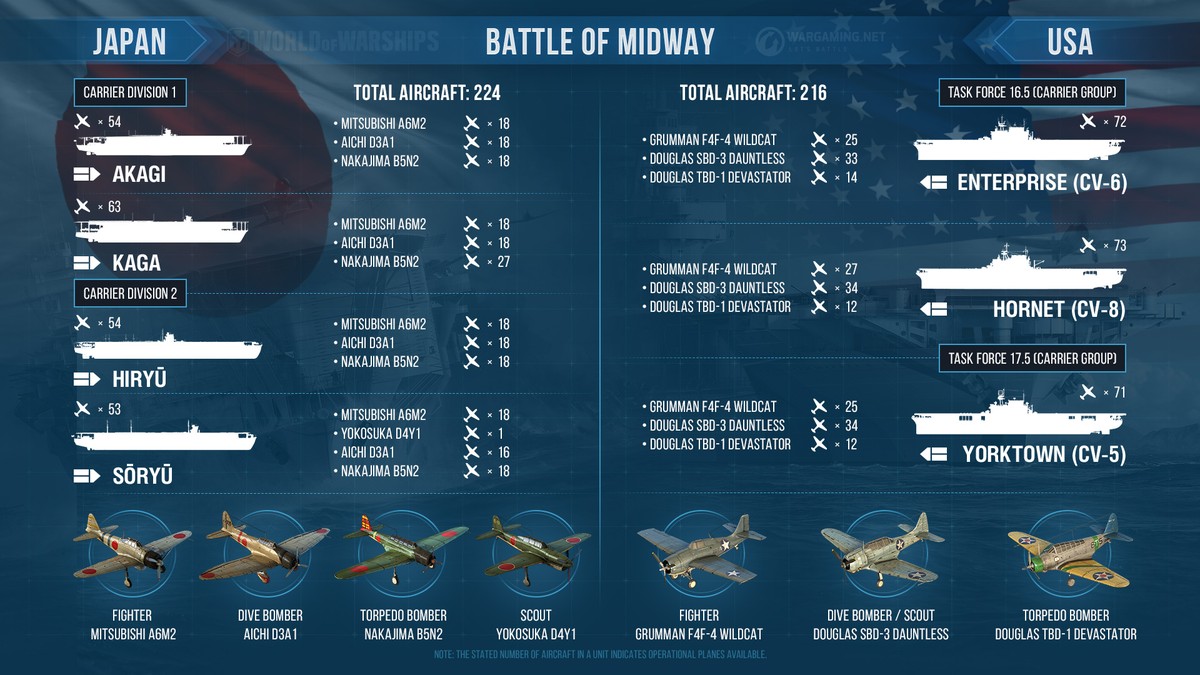




On June 7, 1942, the Battle of Midway—one of the most decisive U.S. victories in its war against Japan—comes to an end. In the four-day sea and air battle, the outnumbered U.S. Pacific Fleet succeeded in destroying four Japanese aircraft carriers with the loss of only one of its own, the Yorktown, thus reversing the tide against the previously invincible Japanese navy.
In six months of offensives, the Japanese had triumphed in lands throughout the Pacific, including Malaysia, Singapore, the Dutch East Indies, the Philippines, and numerous island groups. The United States, however, was a growing threat, and Japanese Admiral Isoroku Yamamoto sought to destroy the U.S. Pacific Fleet before it was large enough to outmatch his own. A thousand miles northwest of Honolulu, the strategic island of Midway became the focus of his scheme to smash U.S. resistance to Japan’s imperial designs. Yamamoto’s plan consisted of a feint toward Alaska followed by an invasion of Midway by a Japanese strike force. When the U.S. Pacific Fleet arrived at Midway to respond to the invasion, it would be destroyed by the superior Japanese fleet waiting unseen to the west. If successful, the plan would eliminate the U.S. Pacific Fleet and provide a forward outpost from which the Japanese could eliminate any future American threat in the Central Pacific.
Unfortunately for the Japanese, U.S. intelligence broke the Japanese naval code, and the Americans anticipated the surprise attack. Three heavy aircraft carriers of the U.S. Pacific Fleet were mustered to challenge the four heavy Japanese carriers steaming toward Midway. In early June, U.S. command correctly recognized a Japanese movement against Alaska’s Aleutian Islands as a diversionary tactic and kept its forces massed around Midway. On June 3, the Japanese occupation force was spotted steaming toward the island, and B-17 Flying Fortresses were sent out from Midway to bomb the strike force but failed to inflict damage. Early in the morning on June 4, a PBY Catalina flying boat torpedoed a Japanese tanker transport, striking the first blow of the Battle of Midway.
Later that morning, an advance Japanese squadron numbering more than 100 bombers and Zero fighters took off from the Japanese carriers to bomb Midway. Twenty-six Wildcat fighters were sent up to intercept the Japanese force and suffered heavy losses in their heroic defense of Midway’s air base. Soon after, bombers and torpedo planes based on Midway took off to attack the Japanese carriers but failed to inflict serious damage. The first phase of the battle was over by 7:00 a.m.
In the meantime, 200 miles to the northeast, two U.S. attack fleets caught the Japanese force entirely by surprise. Beginning around 9:30 a.m., torpedo bombers from the three U.S. carriers descended on the Japanese carriers. Although nearly wiped out, they drew off enemy fighters, and U.S. dive bombers penetrated, catching the Japanese carriers while their decks were cluttered with aircraft and fuel. The dive-bombers quickly destroyed three of the heavy Japanese carriers and one heavy cruiser. The only Japanese carrier that initially escaped destruction, the Hiryu, loosed all its aircraft against the American task force and managed to seriously damage the U.S. carrier Yorktown, forcing its abandonment. At about 5:00 p.m., dive-bombers from the U.S. carrier Enterprise returned the favor, mortally damaging the Hiryu. It was scuttled the next morning.
Admiral Isoruku Yamamoto still had numerous warships at his command, but without his carriers and aircraft he was forced to abandon his Midway invasion plans and begin a westward retreat. On June 5, a U.S. task force pursued his fleet, but bad weather saved it from further destruction. On June 6, the skies cleared, and U.S. aircraft resumed their assault, sinking a cruiser and damaging several other warships. After the planes returned to their carriers, the Americans broke off from the pursuit. Meanwhile, a Japanese submarine torpedoed and fatally wounded the Yorktown, which was in the process of being salvaged. It finally rolled over and sank at dawn on June 7, bringing an end to the battle.
At the Battle of Midway, Japan lost four carriers, a cruiser, and 292 aircraft, and suffered 2,500 casualties. The U.S. lost the Yorktown, the destroyer USS Hammann, 145 aircraft, and suffered 307 casualties. Japan’s losses hobbled its naval might–bringing Japanese and American sea power to approximate parity–and marked the turning point in the Pacific theater of World War II. In August 1942, the great U.S. counteroffensive began at Guadalcanal and did not cease until Japan’s surrender three years later.
It is my sincere desire to provide readers of this site with the best unbiased information available, and a forum where it can be discussed openly, as our Founders intended. But it is not easy nor inexpensive to do so, especially when those who wish to prevent us from making the truth known, attack us without mercy on all fronts on a daily basis. So each time you visit the site, I would ask that you consider the value that you receive and have received from The Burning Platform and the community of which you are a vital part. I can't do it all alone, and I need your help and support to keep it alive. Please consider contributing an amount commensurate to the value that you receive from this site and community, or even by becoming a sustaining supporter through periodic contributions. [Burning Platform LLC - PO Box 1520 Kulpsville, PA 19443] or Paypal
-----------------------------------------------------
To donate via Stripe, click here.
-----------------------------------------------------
Use promo code ILMF2, and save up to 66% on all MyPillow purchases. (The Burning Platform benefits when you use this promo code.)





I’ve read Toll’s trilogy describing the naval battle of the Pacific. It’s outstanding. The first book describes Pearl and Midway.
Midway could have gone either way, we had some incredible luck. If Yamamoto had prevailed, he had Hawaii virtually laid open for occupation with our reinforcements 1,000s of miles away. It was also early in the war and we hadn’t come anywhere near to fully ramping up.
What an unnecessary tragedy!
Thank God there were manly men in the USA back then. Wouldn’t happen today. Tom Cruise and Top Gun is Hollywood, not reality. Were the brave seamen and fighter pilots at Midway gay or Woke? Probably not…..
No probably at all, definitely not. The FJB Kakistocracy Affirmative Action Diversity Woke Queer US Military under jerks like Levin and Austin is doomed to Hell.